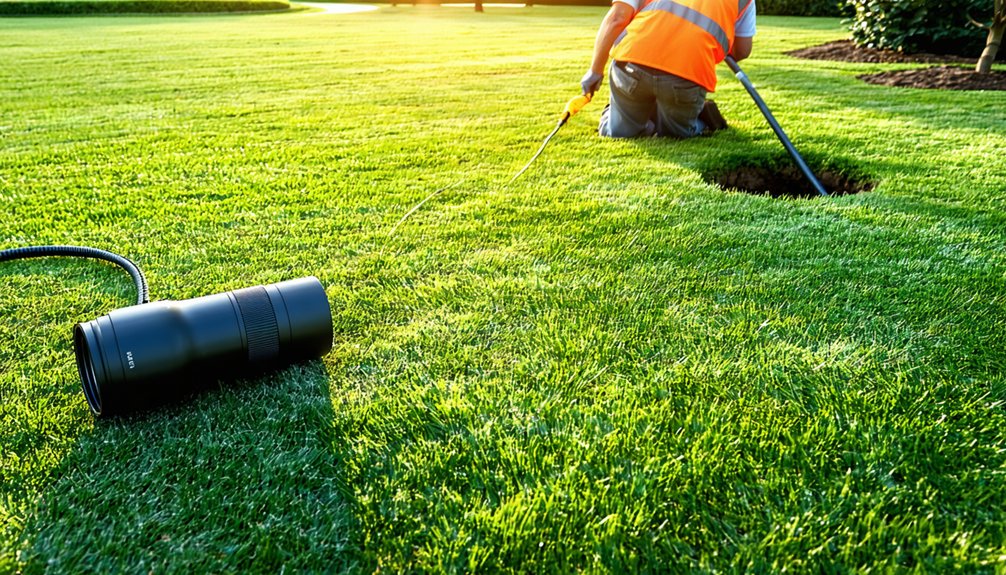Trenchless sewer replacement offers numerous benefits compared to traditional methods. It minimizes disruption by requiring only one or two small access points, preserving landscaping and reducing restoration costs. This method typically results in quick completion, often within a day, using durable materials with a lifespan of up to 100 years. Additionally, it provides a cost-effective design, reducing labor and machinery expenses. Further insights reveal additional advantages and when this solution is most beneficial.
Key Benefits of Trenchless Sewer Replacement
When considering sewer replacement options, trenchless technology offers several distinct advantages that enhance both efficiency and effectiveness. The trenchless sewer replacement method minimizes disruption by requiring only one to two small access points, preserving valuable landscaping and hardscaping. Unlike traditional methods that involve extensive excavation, trenchless repairs can typically be completed within a day, greatly reducing inconvenience for homeowners and businesses.
Furthermore, the materials employed in trenchless repair methods, such as cured-in-place liners and seamless PVC pipes, provide durable long-term solutions, with a lifespan of up to 100 years. This approach is also cost-effective, as it results in reduced labor and restoration expenses due to minimal digging. Additionally, trenchless technology is environmentally friendly, minimizing ecological impacts while maintaining the integrity of surrounding infrastructure. These benefits position trenchless sewer replacement as a superior choice for modern sewer repair needs.
Comparison to Traditional Methods
Trenchless sewer replacement stands in stark contrast to traditional repair methods, particularly regarding the level of disruption and efficiency. Traditional methods often involve extensive excavation, resulting in long, deep trenches that can damage gardens, driveways, and landscaping. In contrast, trenchless sewer repair utilizes one or two small access points, ensuring minimal disruption to the property. The timeline for traditional repairs can extend to weeks due to the need for thorough restoration, while trenchless techniques, such as pipe lining, can often be completed within days, greatly reducing inconvenience for homeowners.
Moreover, trenchless methods typically incur lower overall costs, as they eliminate the need for heavy machinery and extensive labor associated with excavation. Additionally, the environmental impact of traditional repairs is more pronounced due to potential disruption of nearby ecosystems, while trenchless methods are designed to be less invasive, preserving the surrounding landscape and minimizing ground disturbance during the repair service.
When to Consider Trenchless Sewer Replacement
Considering the unique circumstances of a property can greatly influence the decision to opt for trenchless sewer replacement. Homeowners experiencing frequent clogs, foul odors, or visible signs of damage in their sewer lines should evaluate this innovative method. Trenchless sewer replacement is particularly advantageous for properties with extensive landscaping or structures like driveways and patios located directly over sewer lines, as it minimizes disruption and preserves the integrity of these areas. This approach provides fast and efficient solutions, often completed within a single day, considerably reducing downtime and inconvenience. In addition, the long-term maintenance benefits include fewer repairs and lower costs, establishing trenchless replacement as a cost-effective option for addressing aging or damaged sewer systems. By considering these factors, homeowners can make informed decisions to mitigate plumbing issues and enhance the longevity of their sewer infrastructure.
Frequently Asked Questions
What Are the Pros and Cons of Trenchless Sewer Line Replacement?
The pros of trenchless sewer line replacement include significant cost benefits, time efficiency, and minimal soil disruption, reducing property damage during the installation process. Advanced technology allows for durable material choices that can last decades, coupled with warranty options that enhance value. However, cons may arise in cases of severely deteriorated pipes, necessitating traditional methods. Additionally, while maintenance requirements are lower, the environmental impact remains a consideration for sustainable practices in plumbing repairs.
How Long Does a Trenchless Sewer Line Last?
Trenchless sewer lines can last up to 100 years under ideal conditions, reflecting significant trenchless longevity factors. Their construction utilizes durable materials designed to resist corrosion, enhancing sewer material durability. Technology advancements have minimized installation timelines and environmental impact, while cost comparisons reveal long-term savings for homeowners. Regular maintenance requirements are essential to mitigate common issues and recognize replacement indicators, ultimately benefiting homeowners through reduced repair frequency and increased reliability.
Can Trenchless Sewer Repair Fix a Belly?
Trenchless technology can effectively address belly repair in sewer lines, which often arise from soil movement or root intrusion. By utilizing advanced pipe materials, this method restores proper function and alleviates drainage problems without extensive excavation. The process minimizes disruption, enhancing cost efficiency while reducing the environmental impact associated with traditional methods. Homeowners facing plumbing issues can benefit greatly from this innovative approach, ensuring long-term solutions to belly formations in their sewer systems.
How Does Trenchless Sewer Work?
Trenchless technology revolutionizes sewer repairs by employing methods like pipe bursting and horizontal drilling. This innovative installation process minimizes excavation alternatives, markedly reducing disruption and preserving landscaping. A thorough sewer inspection, often enhanced with video technology, guarantees precise diagnostics. Homeowners benefit from lower costs and environmental impact, as less digging translates to fewer disturbances. Maintenance tips include regular inspections, guaranteeing the longevity of the newly installed system, which supports sustainable, efficient waste management solutions.



